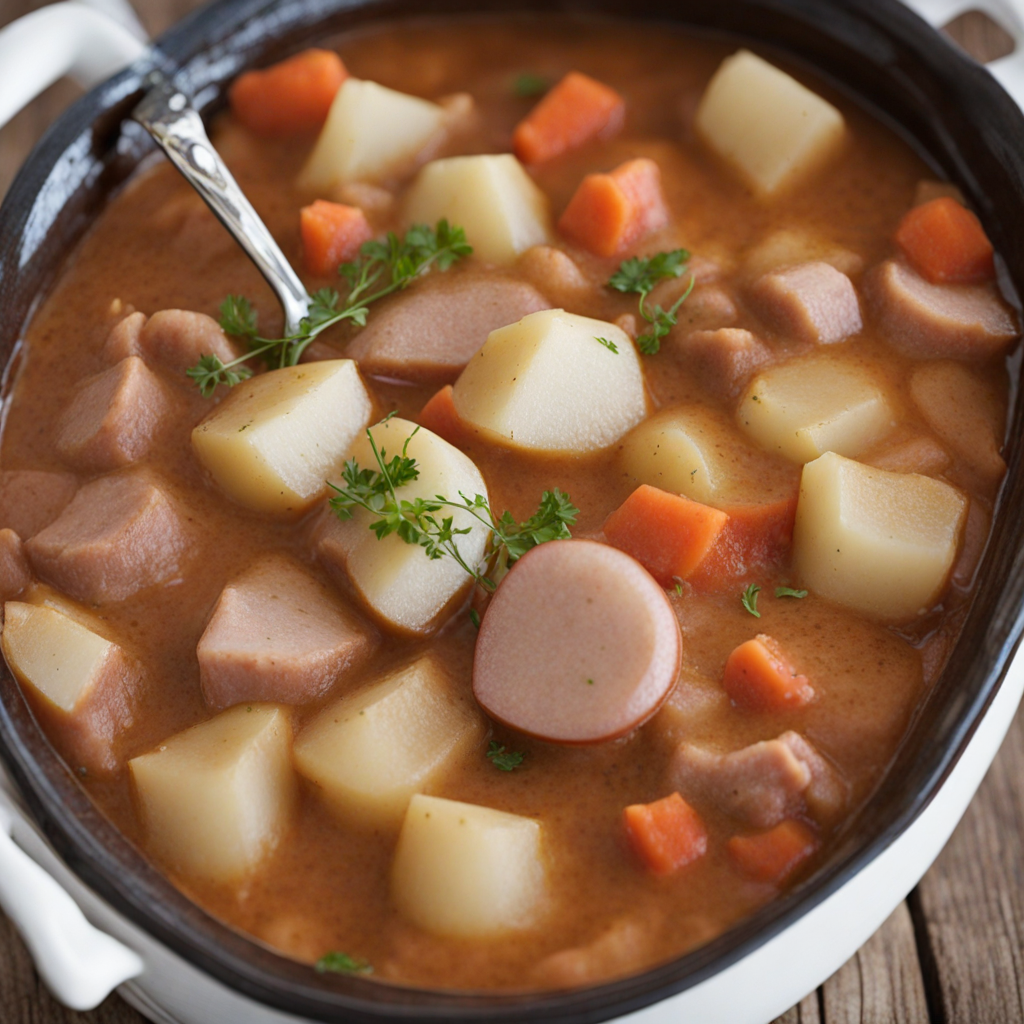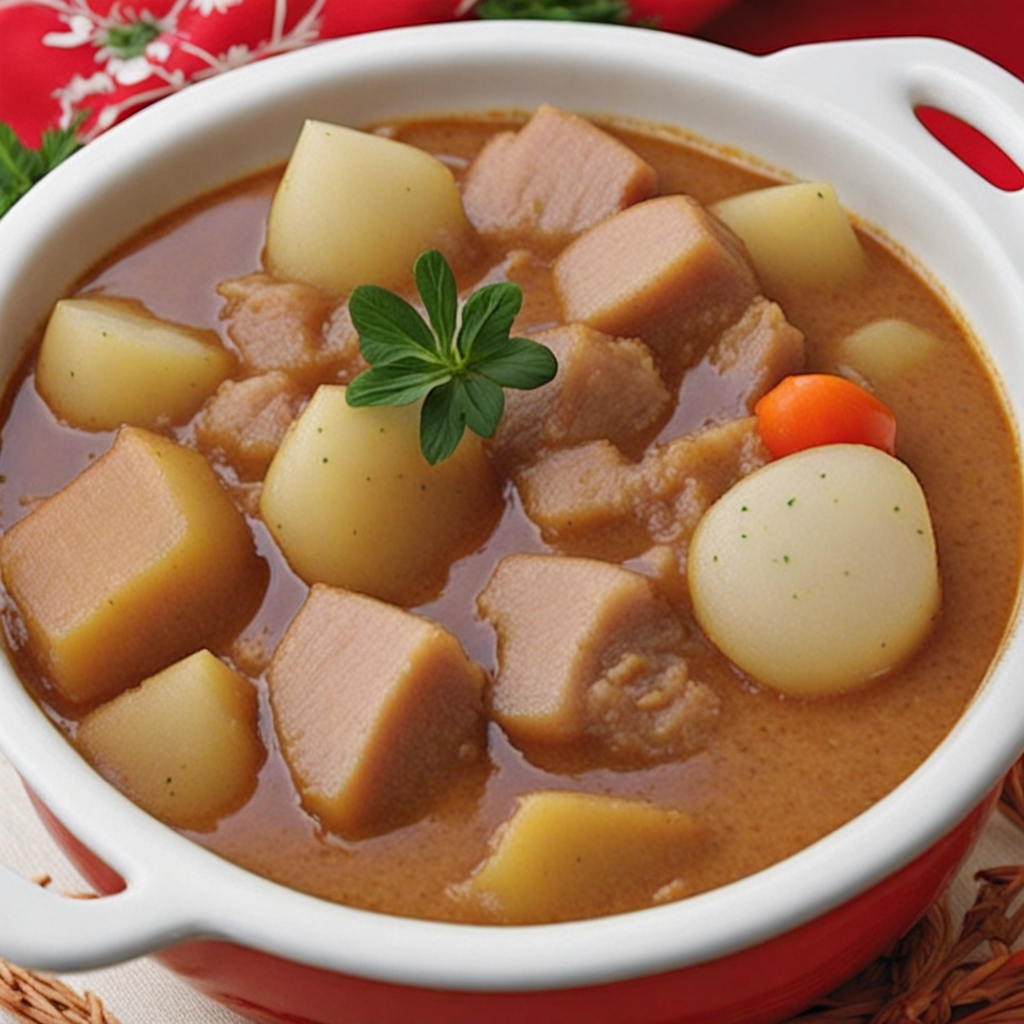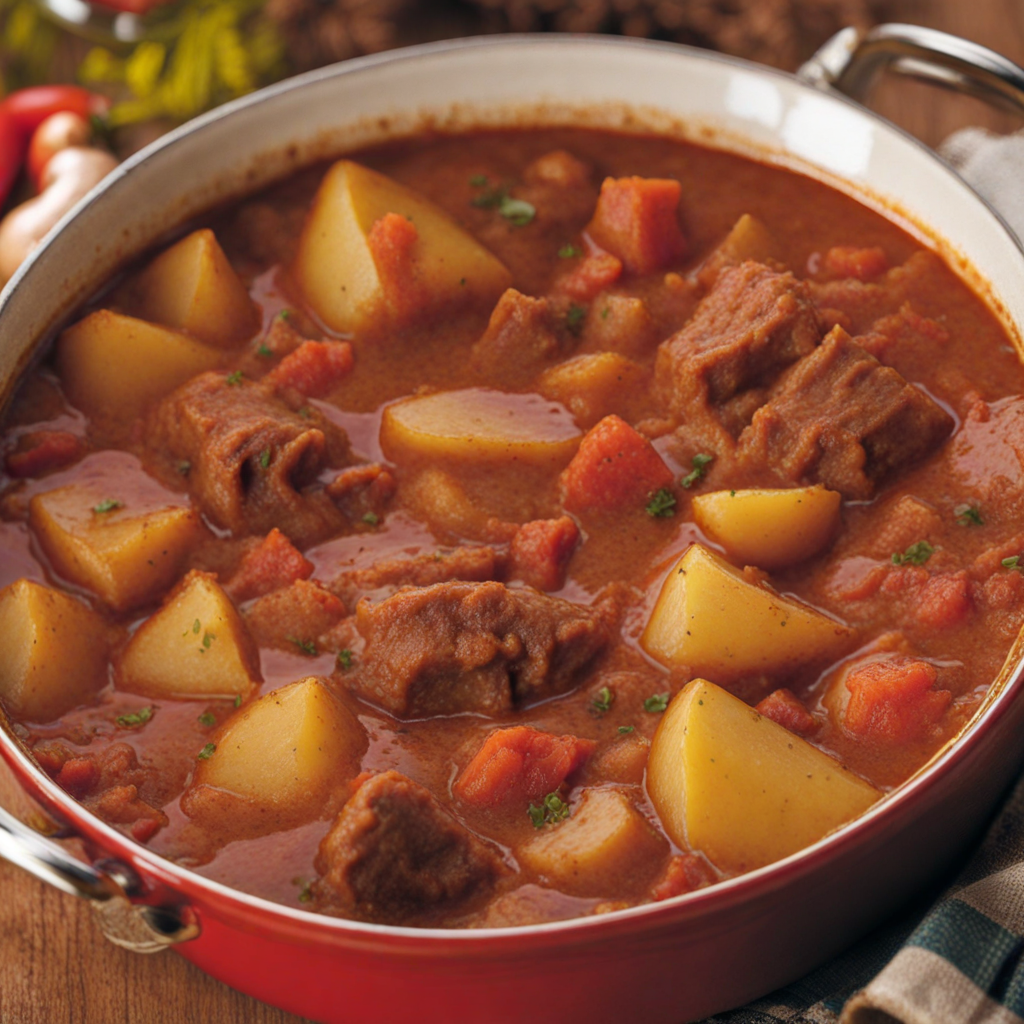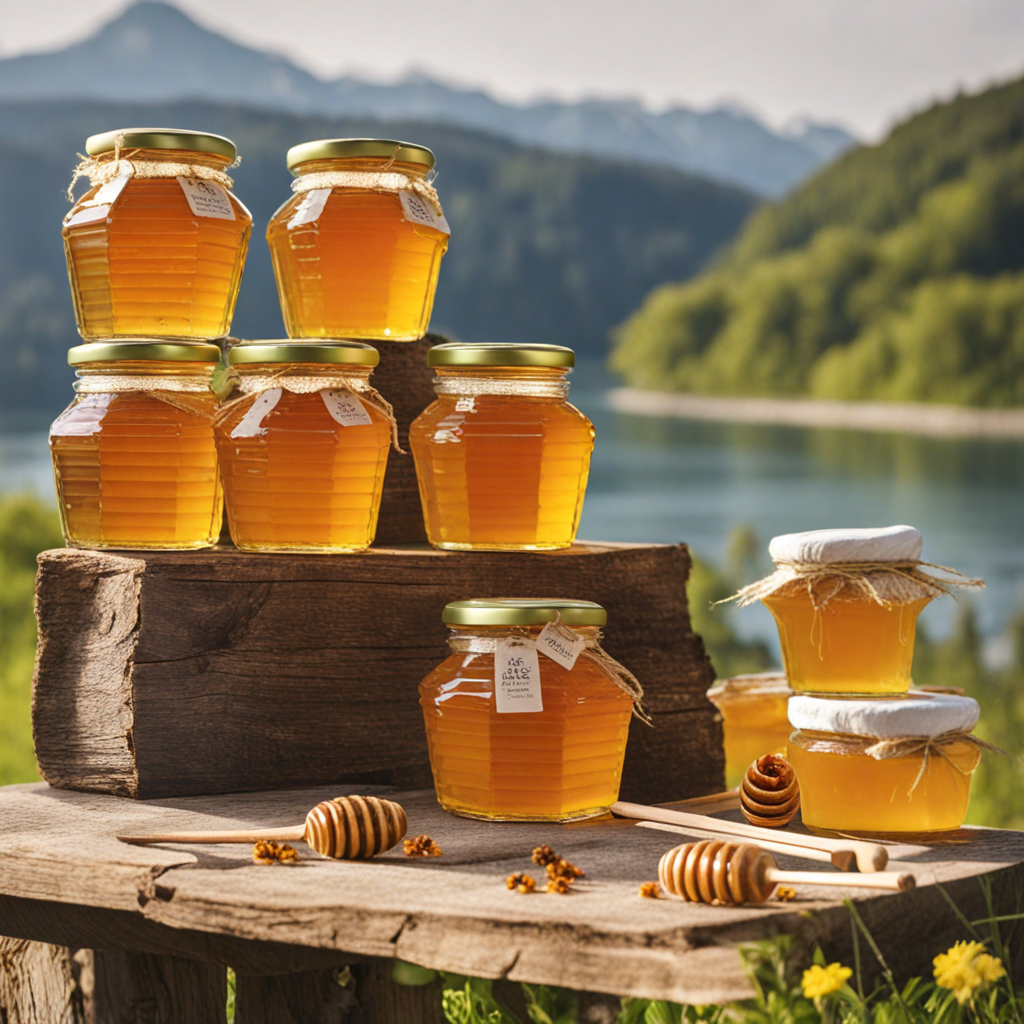Turnip Stew
Turnip Stew, a beloved dish from Slovenia, is a hearty and comforting meal that truly embodies the essence of home cooking. The star ingredient, turnip, is often combined with a medley of root vegetables such as carrots and potatoes, which not only adds depth of flavor but also enhances the dish's nutritional profile. The turnips lend a slightly peppery and earthy taste, while the other vegetables contribute sweetness and texture, creating a delightful balance that warms the soul. Slow-cooked to perfection, this stew allows the flavors to meld beautifully, resulting in a rich and satisfying bowl of goodness. Traditionally, Slovenian Turnip Stew is seasoned with a blend of aromatic herbs such as thyme and bay leaves, which elevate its flavor profile. Some variations include the addition of smoked meats or sausages, infusing the dish with a savory, smoky essence that complements the natural sweetness of the vegetables. The stew is often served with fresh bread or polenta, making it an ideal dish for sharing with family and friends during chilly evenings. Each spoonful is a comforting reminder of Slovenia's rustic culinary heritage, showcasing the simplicity and richness of local ingredients. For those looking to explore new tastes, Turnip Stew offers a unique experience that combines familiar flavors with regional flair. The use of turnips, which may be less common in everyday cooking, introduces an exciting twist to traditional stews, making it a delightful surprise for the palate. Whether enjoyed as a main course or a side dish, this hearty stew is not only a testament to Slovenian cuisine but also a perfect representation of how humble ingredients can come together to create something truly special.
How It Became This Dish
Repoška Juha: A Culinary Tradition of Slovenia Repoška juha, or "Repose Soup," is a beloved traditional dish from Slovenia, particularly associated with the picturesque region of Prekmurje. The soup, characterized by its rich flavor and hearty ingredients, offers a simple yet profound insight into the Slovenian culinary heritage, reflecting the agricultural practices, cultural exchanges, and historical nuances of the region. Origins of Repoška Juha The origins of Repoška juha can be traced back to the agrarian lifestyles of Slovenia, where communities relied heavily on local produce and livestock. The name "Repoška" derives from "repa," which means "turnip" in Slovenian. Turnips have been cultivated in Slovenia since ancient times, likely introduced by the Celts or Romans, and have played a significant role in the diets of rural inhabitants. The region’s soil and climate made it ideal for growing root vegetables, which became staples in the local diet. Repoška juha embodies the spirit of Slovenian peasant food. It was traditionally prepared during the colder months when fresh vegetables were scarce, and families sought nourishing meals that could sustain them through the harsh winters. The soup typically featured a base of turnips, potatoes, and other root vegetables, complemented by a variety of meats such as bacon or sausage for added flavor. Cultural Significance Repoška juha is more than just a meal; it is a representation of Slovenian culture and identity. In rural Slovenia, food has always been a medium of community bonding, storytelling, and celebration. The act of preparing and sharing Repoška juha often brings families together, reinforcing ties and traditions passed down through generations. The soup is often served during special occasions and gatherings, especially in winter months, making it a dish that evokes nostalgia and warmth. In many Slovenian households, recipes for Repoška juha are closely guarded family secrets, with variations that reflect personal tastes and regional differences. This personal connection to the dish enhances its significance as a cultural artifact. Moreover, Repoška juha showcases Slovenia’s agricultural bounty. The emphasis on locally sourced ingredients speaks to the broader cultural movement towards sustainability and farm-to-table dining that has gained traction in recent years. The soup serves as a reminder of Slovenia’s rich natural resources and the importance of preserving traditional agricultural practices. Development Over Time Throughout history, the preparation and ingredients of Repoška juha have evolved, influenced by various socio-political factors and culinary trends. The Austro-Hungarian Empire, which included Slovenia for over a century, introduced a diverse range of spices and cooking techniques that gradually permeated local cuisines. While the core ingredients of Repoška juha remained consistent, the addition of spices and herbs became more common, enhancing the flavor profile of the soup. The 20th century brought significant changes to Slovenia, particularly after World War II and the establishment of socialist Yugoslavia. The period saw a shift towards industrialization and urbanization, which impacted traditional cooking practices. Many rural communities faced population shifts as younger generations moved to urban centers for better opportunities. Consequently, traditional recipes like Repoška juha began to fade from everyday life as convenience foods and modern cooking methods took precedence. However, the late 20th and early 21st centuries marked a revival of interest in traditional Slovenian cuisine. This resurgence can be attributed to a growing appreciation for local and sustainable foods, as well as a desire to reconnect with cultural roots. Culinary festivals, farmer’s markets, and the promotion of traditional recipes in restaurants have played a crucial role in reintroducing dishes like Repoška juha to both locals and tourists. Chefs and home cooks have embraced the challenge of modernizing traditional soups while maintaining their authentic essence. Some contemporary variations of Repoška juha may include additional ingredients such as beans or seasonal vegetables, reflecting the evolving palate of today’s diners. Furthermore, the increasing popularity of vegetarian and vegan diets has prompted adaptations of Repoška juha that exclude meat, showcasing the soup's versatility. Repoška Juha Today Today, Repoška juha is celebrated not only as a regional specialty but also as a symbol of national pride. Its profile has expanded beyond Slovenian borders, with international food enthusiasts discovering its comforting flavors. Slovenian restaurants around the world often feature Repoška juha on their menus, introducing new audiences to this traditional dish. Slovenia’s commitment to preserving its culinary heritage is evident in initiatives that promote traditional foods. The Slovene Tourist Board and various cultural organizations actively work to highlight regional cuisines, including Repoška juha, as part of the country’s cultural tourism strategy. Food tours, cooking classes, and culinary workshops provide opportunities for visitors to engage with Slovenian food culture, ensuring that dishes like Repoška juha remain relevant and appreciated. In recent years, the influence of social media has also played a role in the revival of Repoška juha. Food bloggers and influencers showcase traditional recipes, often putting a modern twist on them. This visibility has encouraged younger generations to explore their culinary heritage, reviving interest in home cooking and traditional recipes. Conclusion Repoška juha stands as a testament to Slovenia's rich culinary history, embodying the resilience and creativity of its people. From its humble origins as a peasant dish to its current status as a cherished symbol of Slovenian culture, the soup reflects the interplay between tradition and modernity. As Slovenia continues to celebrate its culinary roots, Repoška juha will undoubtedly remain a beloved staple, nourishing both body and soul for generations to come. The journey of Repoška juha is a reminder of the power of food to unite communities, preserve traditions, and tell the stories of a nation.
You may like
Discover local flavors from Slovenia







